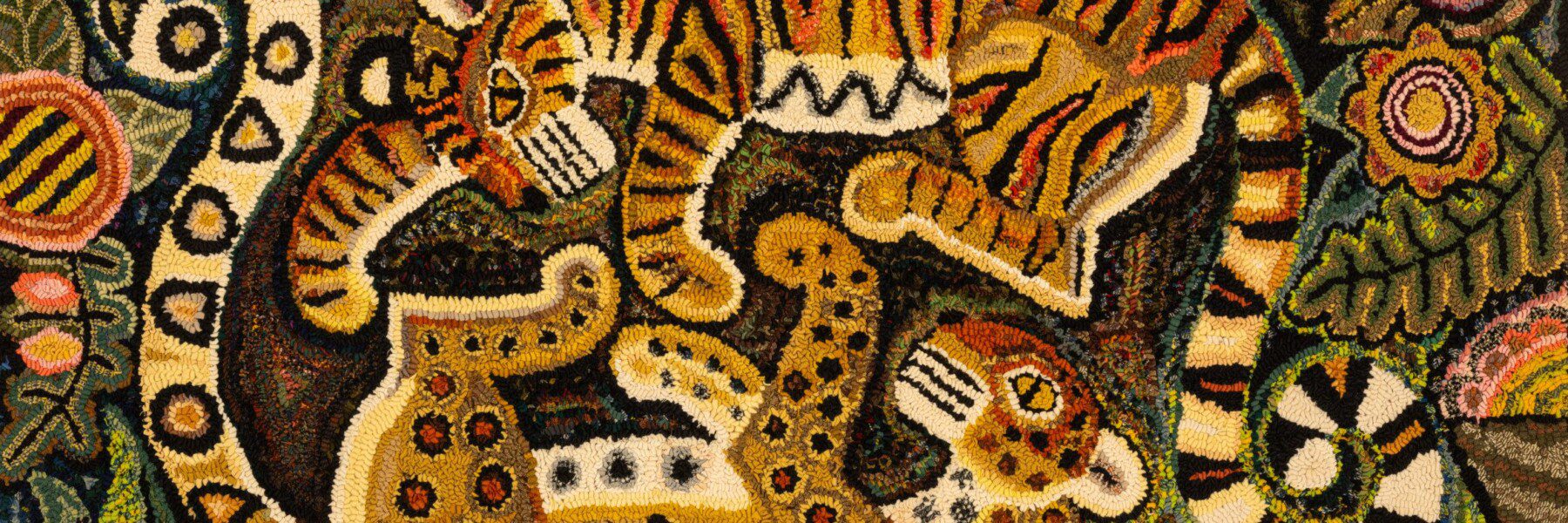From forests and jungles to savannahs and grasslands to the depths of the ocean, Dahlov Ipcar (1917–2017) brought to life a menagerie of creatures in paintings, publications, and textiles, captivating audiences over nearly all her lifetime.
Ipcar was an American artist and author renowned for an imaginative, distinctive style that combined elements of modernism, social realism, folk art, and a fascination with the natural world. Today she is best known for her lyrical, lavishly illustrated books for children and young adults. This exhibition highlights the ways commercially available, printed fabrics informed the artist’s work across media.
Born in Windsor, Vermont, Ipcar was immersed in a creative environment from a young age. Her parents, William and Marguerite Zorach, were prominent artists who worked in painting, sculpture, and a variety of additional media. In 1939, the Museum of Modern Art mounted a solo exhibition of her work titled “Creative Growth: Childhood to Maturity.” Featuring artworks created between the ages of 3 and 22, Dahlov Ipcar was the first woman and youngest artist to be featured in a solo exhibition at the museum.
Ipcar ultimately wrote and illustrated more than 30 books, many of which featured animals and the rural landscape. She was initially inspired by domesticated creatures like cows, horses, and chickens at her family’s home and farm in coastal Maine. “My illustrations were simple and realistic, but modern,” Ipcar recalled. The artist gradually moved away from farm scenes to wildlife, enlivening creatures from every corner of the world.
Moving from the printed page to three dimensions, Ipcar constructed expressive, beguiling “soft sculptures” from pieced cottons, wire, stuffing, and notions like buttons. These intricate pieced and wired sculptures are singularly identifiable with Ipcar’s work, appearing again and again in artworks and publications produced over the course of the artist’s long career.
The Dana-Spencer Textile Galleries at Hat and Fragrance

